Whittington Castle is located in the village of Whittington in Shropshire, just a stone’s throw away from the town of Oswestry. While today Whittington stands very much on the English side of the Welsh border, during the Middle Ages it was situated within the Welsh March – a loosely defined area that ran along the border between England and Wales, and into South Wales. This area was not controlled by the English Kings but instead by Marcher Lords whose role, amongst others, were to defend this border from Welsh raiders.
| Built | 12th Century |
| Type | Motte and Bailey |
| Condition | Ruinous |
| Ownership | Lloyd family – Cared for by the Whittington Castle Preservation Trust |
| Access | Public – Free Admission |
| Postcode | SY11 4DF |
Click here to explore Whittington Castle with us and discover the history
Whittington’s location is not what would be considered ideal for the construction of a fortification. There was marshland to the north which acted as a good natural defence and the Babbinswood forest to the south, but a lot of the surrounding area was gentle rolling hills, so there were no steep hills or high ground to build a castle on. A settlement likely existed there since prehistoric times, as a nearby spring would have provided a steady water supply. This could be one of the reasons why such a fortress was built here, despite the location’s defensive short-comings.
The first castle constructed was a motte-and-bailey castle in the 12 century, which would be transformed over time into the stone castle which stands in ruin today.
Early Origins
The origins of Whittington Castle are very sketchy, with the first mention referencing a castle being built in Whittington at around 840. There is very little reliable evidence to back this up and it wasn’t really until after the Norman invasion did we start to get more of a historical account.
The Babbinswood forest which lay just to the south of Whittington was an important resource as it could supply the village with all of the materials needed to construct buildings and structures for both domestic and defensive purposes. Such of its importance, the forest often was subject of dispute between the Lords of Whittington and their neighbours.
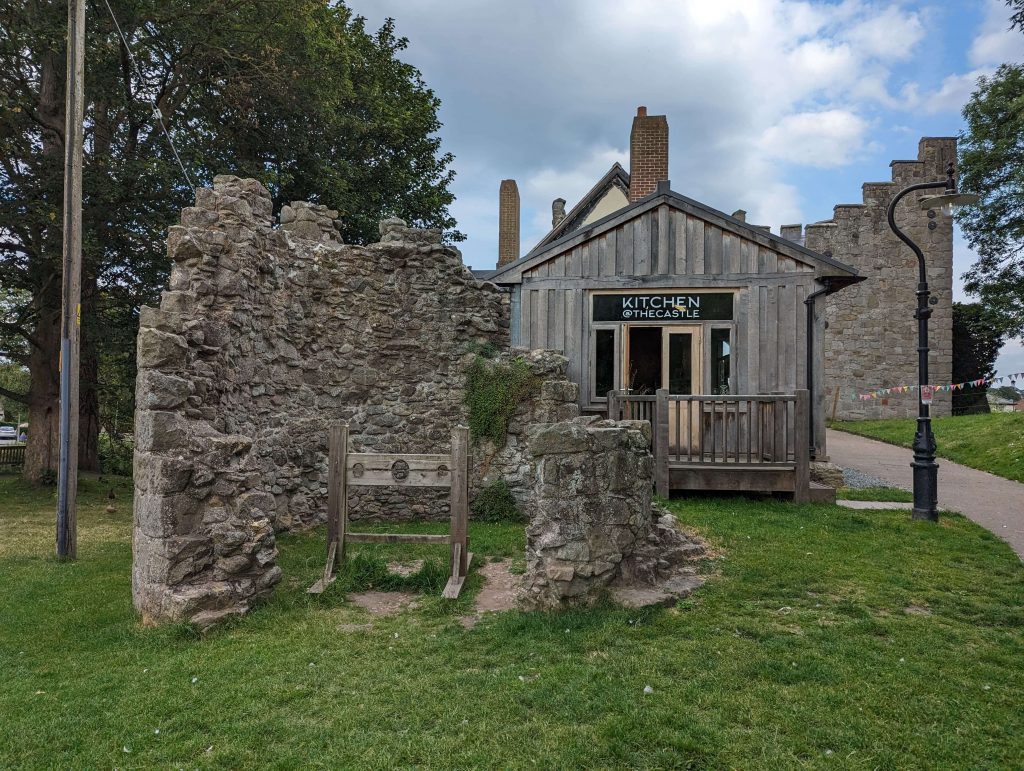

The first formal reference to Whittington castle was not until 1138 (and some time after the Domesday Book, 1086). The reference states that it was one of the castles William Peverel had fortified for Empress Matilda, claimant to the throne, in her war against King Stephen. Known as The Anarchy, this civil war was brought about when Stephen seized the throne after his uncle King Henry I died. The Peverel family had received vast amounts of land after the Norman Conquest as reward, and was recorded in the Domesday book for building castles.
In 1149, Whittington became part of the Kingdom of Powys when Madog ap Maredudd seized the area. When Madog died in 1160 the lands were returned to the English, but King Henry II did not allow the heirs of William Peverel to reclaim the castle, so the Crown held onto it. After a brief Lordship held by Geoffrey de Vere during 1164-1165, Henry II granted it to Roger de Powys and his heirs.
The Home of the FitzWarin Family
The origins of the FitzWarin family is also a sketchy one. There is no mention of them in the Domesday Book which would suggest that they did not come to England after the Conquest of 1066. While difficult to know for sure, it is generally believed that the family origin can be traced back to Warin de Metz who came over to England during the reign of William the Conqueror. He went on to marry Melette, niece of William Peveril. This is the link that could explain how and why Fulk FitzWarin had a later claim to the Whittington Lordship.
Fulk FitzWarin I, born 1115, was potentially the son of Warin de Metz according to some mediaeval romance. Fulk was a close ally and supporter of King Henry II but was unable to obtain Whittington Castle despite helping Henry II’s mother, Empress Matilda, in her civil war involving King Stephen.
Legend of the Holy Grail
Legend has it that Fulk FitzWarin kept the Marian Chalice, thought by some to be the Holy Grail, at the private chapel of the White Castle. Whittington Castle was built of a light coloured stone and was referred to as the White Castle. Fulk was the grandson of Payne Peveril, a Knight in the First Crusade and who was one in the line of guardians of the Grail.
Fulk died in 1170-71 and his son Fulk II, succeeded him. Fulk II married Hawise de Dinan, the daughter of the wealthy Anglo-Norman nobleman Joceas de Dinan. Marrying into such a wealthy family elevated Fulks status to some degree, but he still had trouble laying claim to his fathers lands (which previously had been acquired from the Peverel family). Eventually he was partially successful and acquired some of his fathers lands in an official claim which included Whittington. The claim was eventually recognised in 1195 after a judgement at the Court of Curia Regis ruled in Fulk’s favour, but still issues arose in acquiring the actual possession of the castle up to his death in 1198.
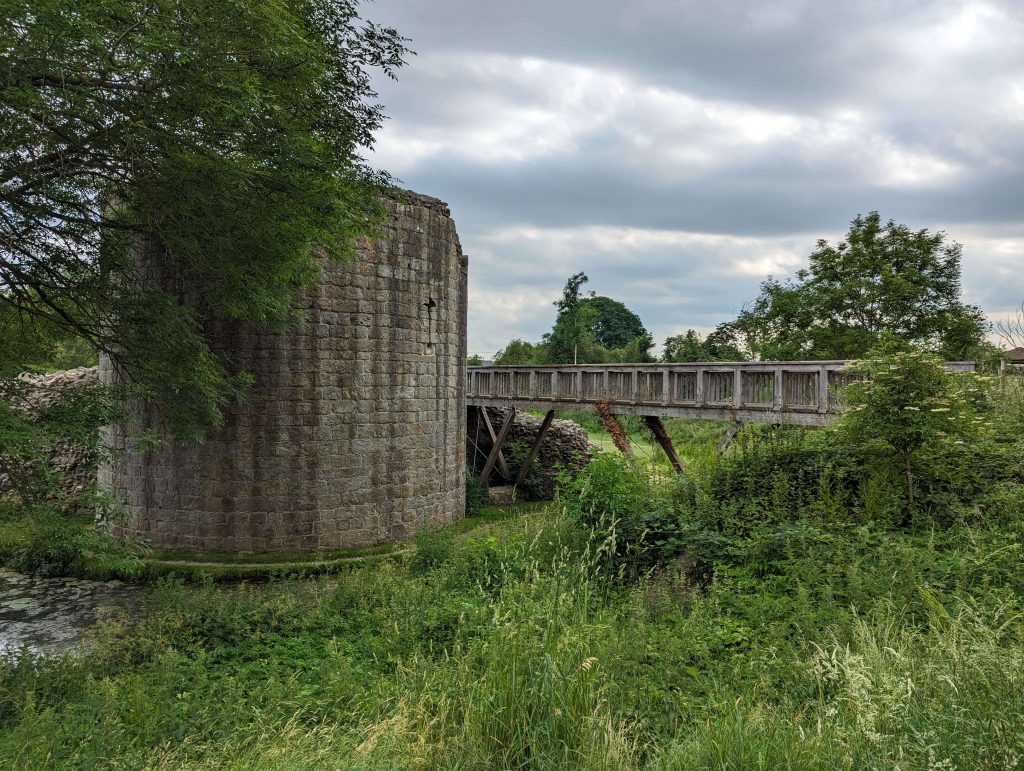
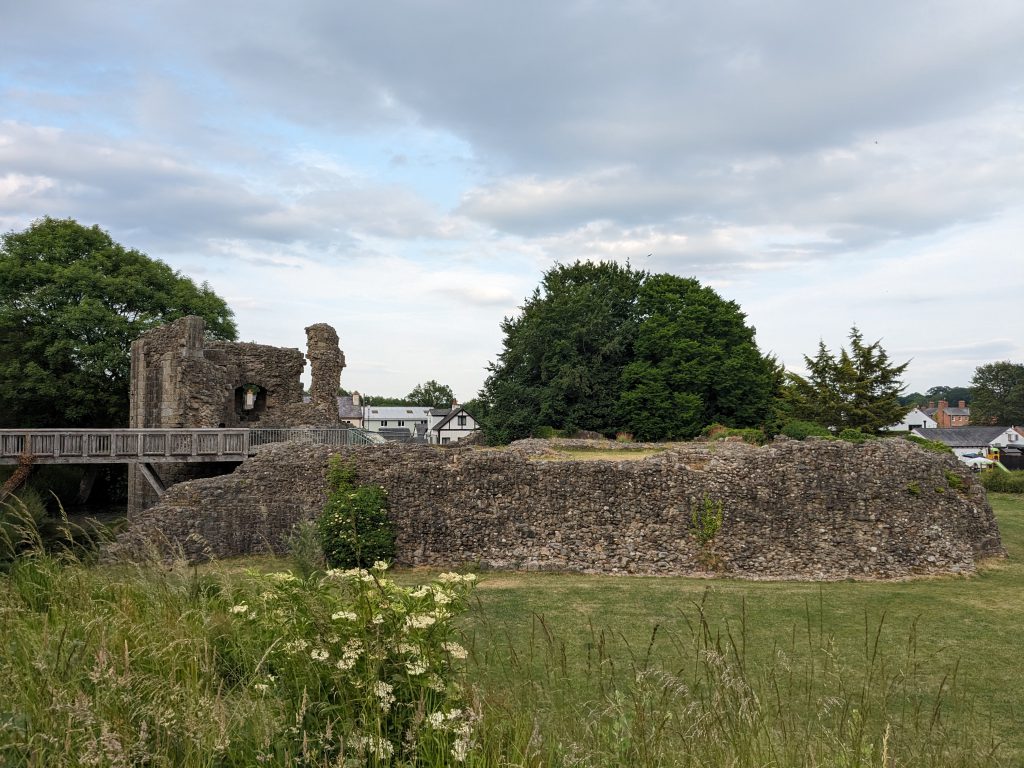
Fulk II had a son Fulk III who continued the pursuit of the now legal claim. Ongoing problems led Fulk to eventually rebel against King John in 1200. Legend has it that this dispute resulted in Fulk being declared an outlaw and was exiled. A lot of Fulk’s story comes from a romance titled ‘Fouke le Fitz Waryn’ where we start to see certain similarities with the tale of Robin Hood. For example folk tales tell of how Fulk robbed from the rich and gave to the poor. Sound familiar? This leads some people to believe that maybe Robin Hood was a fictional account of Fulk’s time as an outlaw.
In 1203 the King pardoned Fulk, his brothers and associates, and in 1204 the Whittington estate was finally in the possession of the FitzWarin family. During all of this time, Roger de Powis and his heirs, who had been holding the castle, had commissioned some repair work, but it is undocumented as to what this entailed.
Now that the castle was finally in the hands of its new owners, Whittington entered its most prosperous period, with it being passed down the male line of the family, from father to son all called Fulk, all the way to 1420.
In 1207 Fulk III married Matilda le Vavasour, daughter of the wealthy Robert le Vavasour. While this brought him additional wealth and raised his social status, Fulk still had a considerable debt owed to the Crown. While initially having a good relationship with King John, it was possibly due to this debt that he decided to join the baron’s rebellion in 1215. While not a particularly successful rebellion, by 1218 he had already sorted out his differences and began a new successful relationship with King Henry III.
Even with this, there was likely an element of distrust between the King and Fulk, as Fulk was granted permission to strengthen his castle from attacks by the Welsh, but only for it to be done in away that made the castle strong enough to repel any attack, rather than modifications that would have made it a truly formidable fortress.
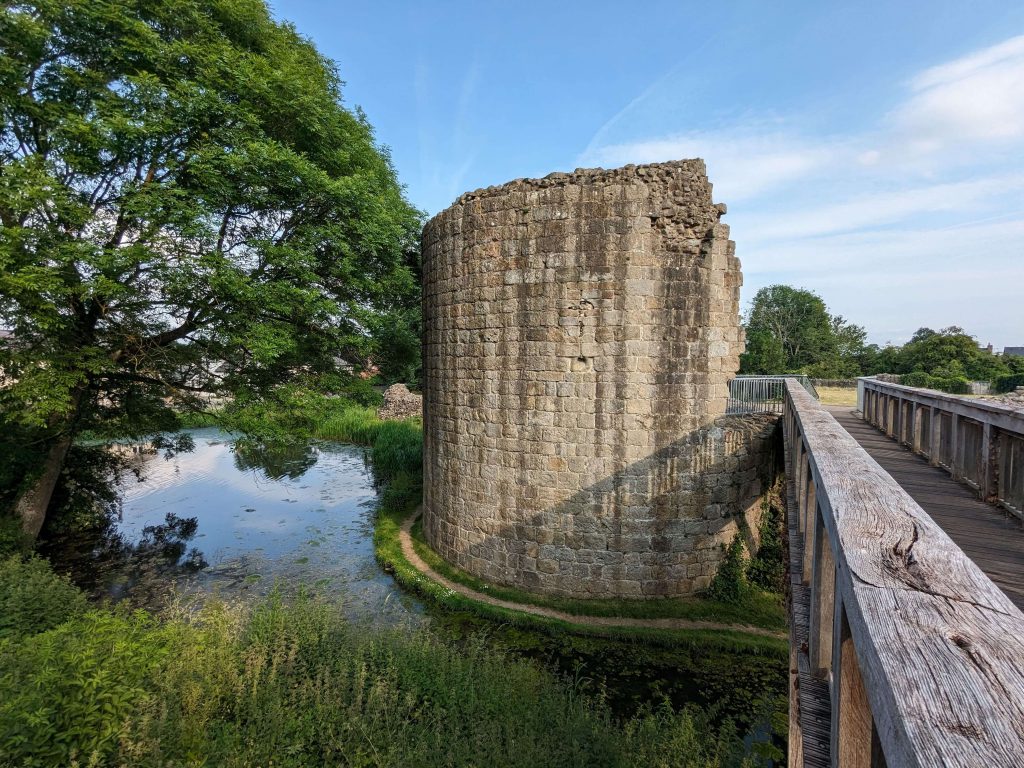

Along with other castles in the area, Whittington Castle was subsequently captured by Llewelyn ab Iorwerth (Llewelyn the Great) in March 1223. By July it was back in the hands of Fulk once the Welsh had left but it was likely damaged during this time.
Up to this point the castle was a motte-and-bailey construction built of only earth and timber. Rebuilding of the castle into stone started in the early 13th century and the reconstruction featured a tower keep (in-which the foundations remain today) standing on the motte of the new inner bailey. The new inner bailey consisted of a walled raised area with circular towers and housing various inner buildings. The original outer gatehouse was also built.
Relations with the Welsh at this point were quite strained with periods of relative peace broken up with fighting and skirmishes. In 1236 King Henry III appointed Fulk as arbitrator, responsible for overseeing the truce between the English and Welsh.
Fulk III died in the later 1250s, but by this time his son Fulk IV was already heavily involved with family business. For the next few years Fulk IV defended the Marches and his lands, which were recognised by Henry III who he had developed a good and loyal relationship with. In 1264 at the battle of Lewes during the Second Barons War, while fighting on the side of the King, Fulk drowned in a stream.
Fulk V was very young when his father died. He eventually went on to marry Margaret, the daughter of Gruffydd ap Gwenwynwyn, Lord of Powys. With tensions still high in the Marches as well as new military focuses starting to develop towards other countries such as Scotland and France, Whittington went on to become a key provider of troops. In 1295, during the reign of King Edward I, Fulk V was made the first Baron FitzWarin as reward for his services to the king.
In the 14th century and during the ownership by Fulk VI, it is likely that he and his wife were responsible for the extensive works carried out with the focus on accommodation rather than defence. Gardens were added by modifications made to the layout of the outer bailey and water defences. The great hall was rebuilt and the living spaces were likely refurbished.
In 1330 Fulk VI was accused of rebellion and Whittington Castle was seized and given to a keeper. Towards the end of 1330, Fulk was cleared of these accusations and soon his lands were back in his possession.
The castle then passed onto Fulk VII, VIII and then IX by which time in 1378, the castle was described as being in need of repair. Records show work carried out on the castle in 1385 which covered the castle walls, the roofs of the towers and the old hall. But even with these repairs, by 1392 the castle had been described as being very ruinous.
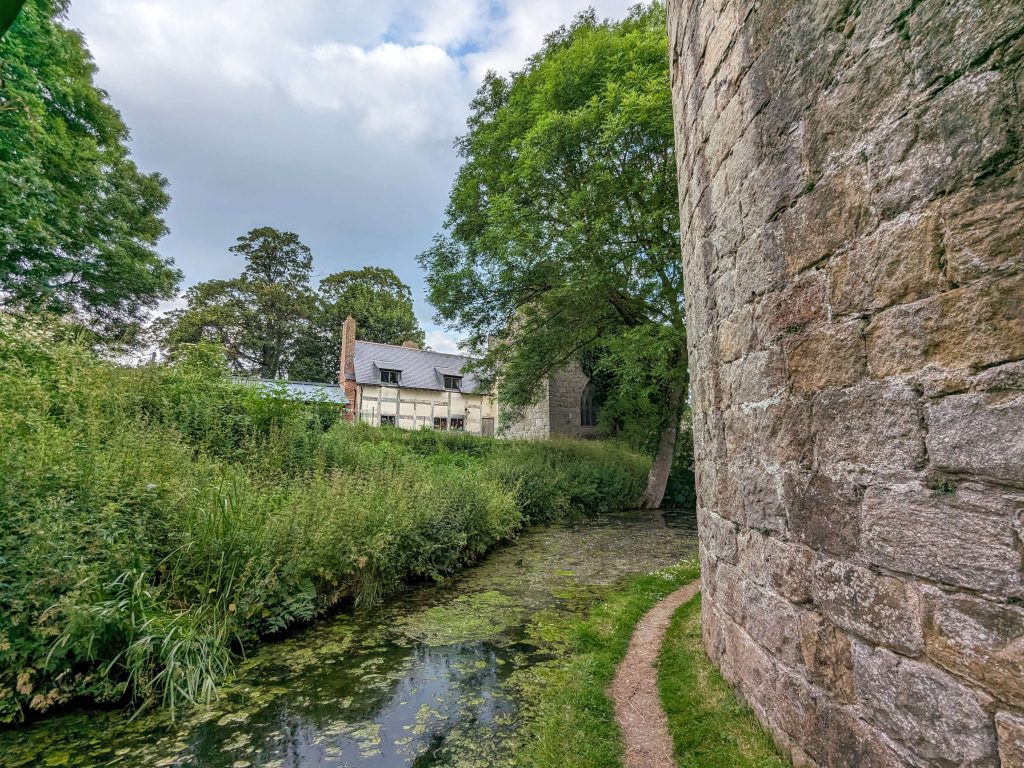
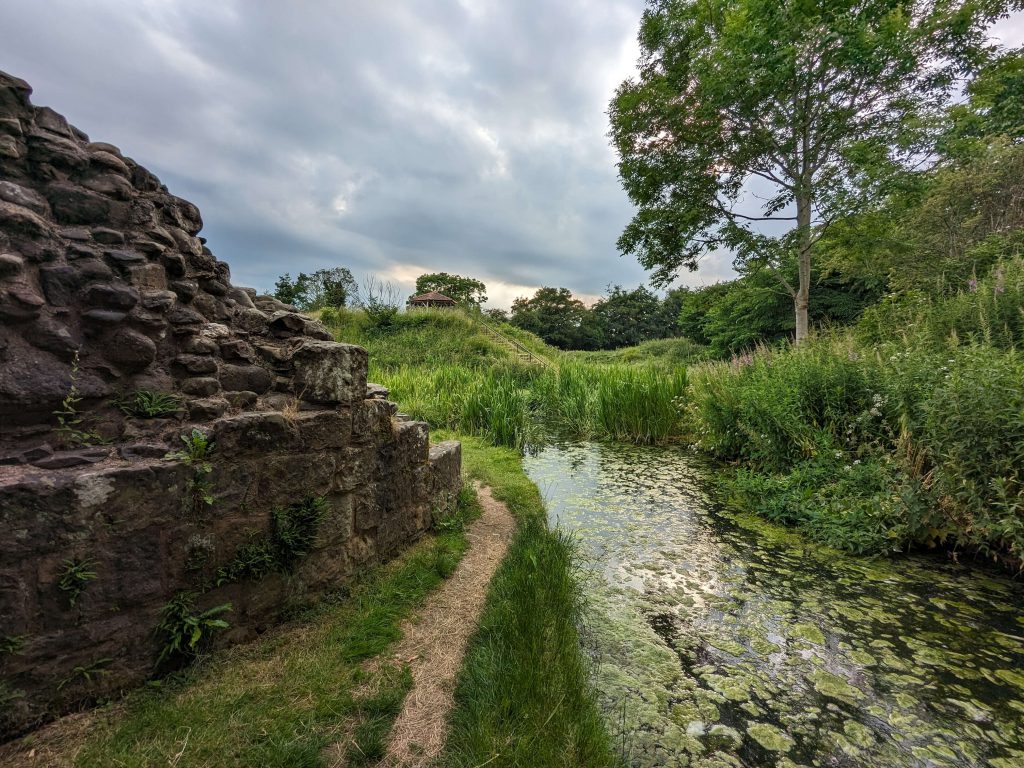
Fulk X was born in 1389 but being another very young heir, the castle was granted to his relative Ivo FitzWarin who was allowed to spend a little on repair works. During the Welsh Revolt which started in 1400, Owain Glyndŵr began attacking towns which included the nearby Oswestry. The castles that stood on the border, including Whittington, stood strong with none being captured.
In 1406 the last of the Fulks, Fulk XI was born. He died aged just 14 which was the end of the direct line of males of the FitzWarin family. Fulk XI’s sister, Elizabeth was the next heir who was 17 and already married to Richard Haukeford whose father had been Lord Chief Justice of England.
The End of the FitzWarin Reign and Further Decline
In 1536, the new English-Welsh border was formed which also saw the end of the Marcher lordships. Whittington and several others now formed part of Shropshire.
John Bouchier, 2nd Earl of Bath inherited Whittington Castle and lordship through various marriages where the FitzWarin peerage had been carried into the Bourchier family. In 1545 he exchanged the castle and lordship for some estates in Devon with King Henry VII.
Through the rest of the 1500s, the Crown leased the castle to a number of different tenants, until eventually William Albany acquired it. It was then passed onto his grandson Francis in the early 1620s. Francis had built up a considerable amount of debt and gave permission for stone to be removed from the castle so that it could be used to build houses and an iron work.
In 1638 Whittington Castle and lordship was then acquired by the Lloyd family of the nearby Aston Hall, just a couple of miles away. To this date the castle and land are still in ownership of the Lloyd family.
At around 1760 the eastern tower of the inner bailey fell into the moat. After this much of the remaining inner bailey was dismantled and used for repairs to roads or the construction of new ones.
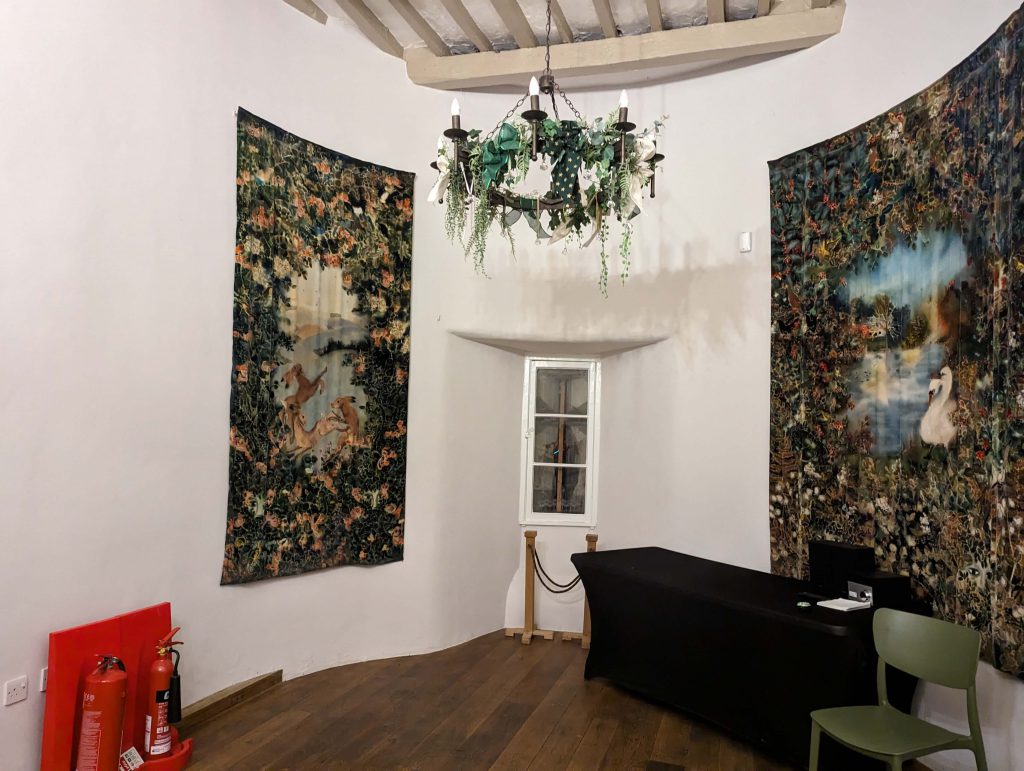

Restoration
The early part of the 1800s saw a restoration project undertaken by William Lloyd. The result of which was the restoration of the gatehouse as it stands today.
Today
Today the castle is looked after and managed by the Whittington Castle Preservation Trust that was setup in 1998. Entry to the castle is free, outside of special events, and there is an on-site car park which does require a fee.
Ghost Stories
Whittington Castle has quite often been associated with ghost stories and hauntings. In 2016 it featured on the TV show Most Haunted Castles of Britain, where ghost stories and legends were shared amongst the team, including the legend of the Holy Grail. It also featured on a 2017 show called Ghost Dimension Flying Solo.
Some visitors have seen two children with pale faces gazing out of the windows of the gatehouse. They were believed to have been two children who disappeared one day, never to be seen again. Some years later, a chest was opened in a room that was very rarely used. Inside, the skeletons of two young boys were found. It is thought that the boys had become trapped playing hide and seek and suffocated. Visitors have also reported hearing their cries for help.
Other mysterious figures have also been spotted at Whittington Castle. One was seen wearing a black coat and hood who was guarding the castle gates, another was a blacksmith who was seen wearing a leather apron.
Click below to explore Whittington Castle with us

